As our bus wound around the steep cliffs overlooking the Adriatic, I caught my first glimpse of Dubrovnik — a striking walled city poised between rugged mountains and the vibrant blue sea. I’d heard stories of its allure, but nothing prepared me for the real thing. That first view felt like stepping into a storybook, yet Dubrovnik isn’t just about breathtaking views; it’s a city layered in history, rich culture, and countless experiences for curious travellers.
If you’re wondering whether Dubrovnik lives up to its reputation or if it’s the best choice for your next adventure, you’re in the right place. I’ve gathered the essentials for anyone planning a visit — from getting there to making the most of your time once you arrive.
Croatia’s rising popularity means Dubrovnik can feel a bit busy, but I’ll share some tips to help you navigate its bustling streets and find quieter moments that reveal the city’s true character. From my experience with friends — getting lost in the Old Town, dipping into the Adriatic, and savouring local seafood — I know firsthand how Dubrovnik can surprise and inspire.
So let’s dive into what makes Dubrovnik such a memorable destination and ensure you have all the information you need for a fulfilling and seamless trip.
Disclosure: This article contains affiliate links. If you make a purchase through these links, I may earn a small commission at no extra cost to you. Thank you for supporting my blog!
A Brief History of Dubrovnik
Dubrovnik’s origins are layered in both legend and history.
Established around the 7th century as a haven for those fleeing invasions, it grew under various rulers — from Venetian merchants to Habsburg and Yugoslav rule — each leaving its mark on the city’s architecture and culture. The city’s resilience shone again in 1991, when it was besieged during Croatia’s fight for independence following the country’s declaration of independence from Yugoslavia.
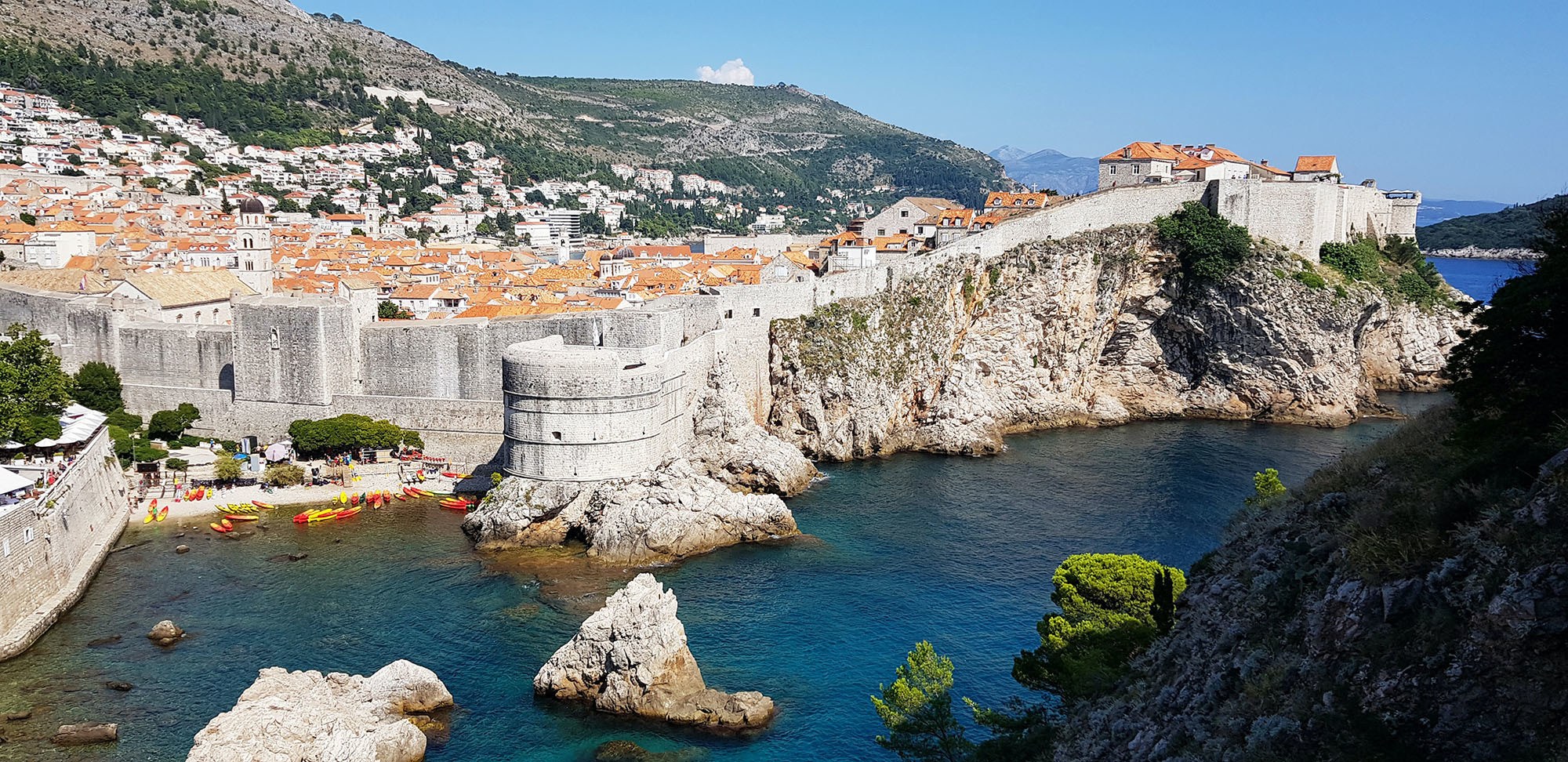
Today, Dubrovnik stands proudly, its meticulously restored Old Town inviting travellers like you and me to step into a world where history, beauty, and culture converge.
Each step through Dubrovnik to me felt like a quiet invitation to connect with the lives and legacies that have shaped this place — a reminder that history isn’t just behind glass; it’s alive, woven into the very streets we walk.
With history alive in every corner, exploring Dubrovnik’s sights isn’t just about seeing landmarks; it’s about stepping into the stories they hold. Here are some must-see places that let you experience the city’s spirit firsthand.
Iconic Things to Do in Dubrovnik
Walk Dubrovnik's City Walls
One of Dubrovnik’s defining experiences, a walk along the city walls is a journey into the city’s history, offering panoramic views over the Old Town and the glistening Adriatic.
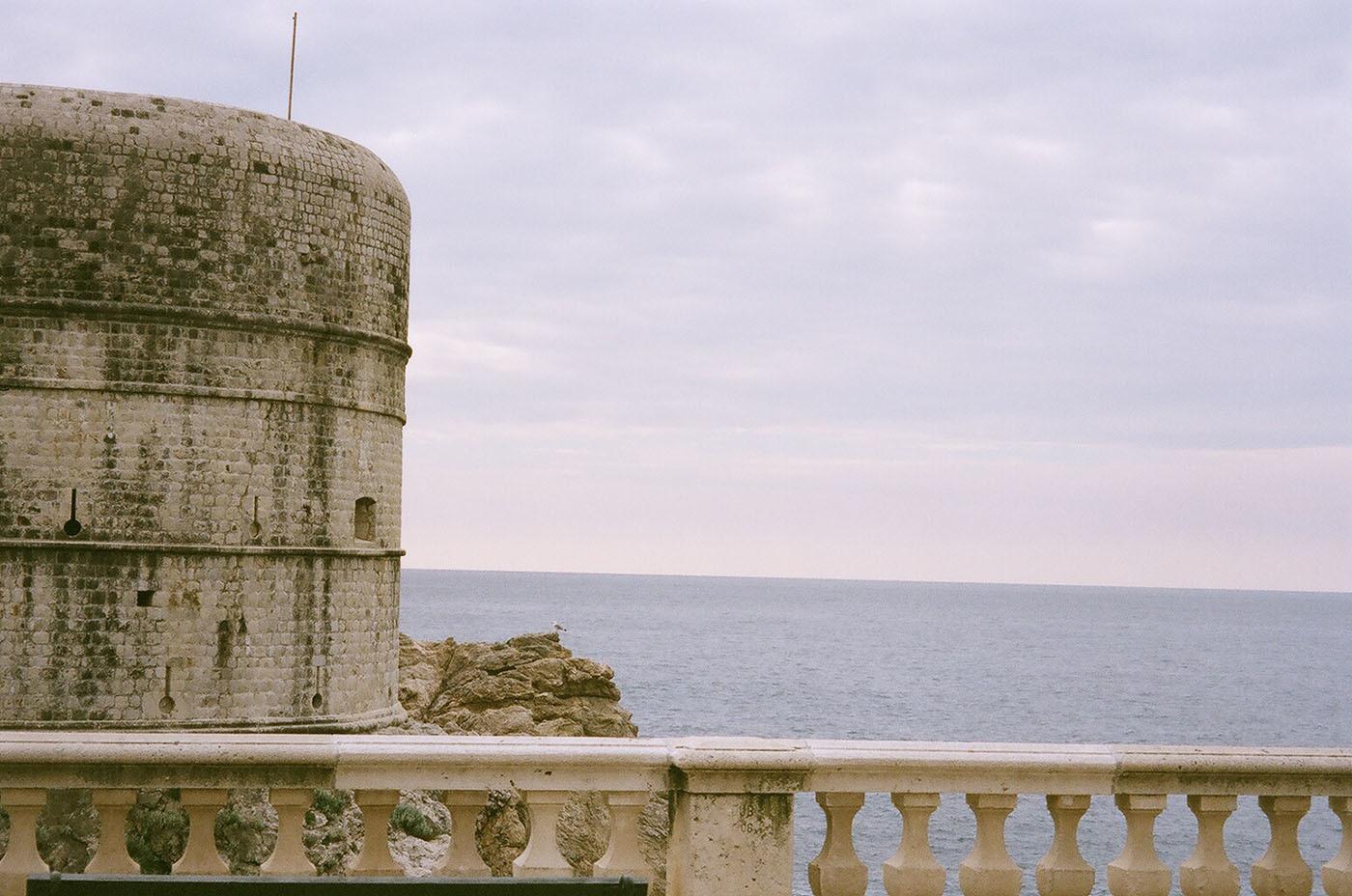
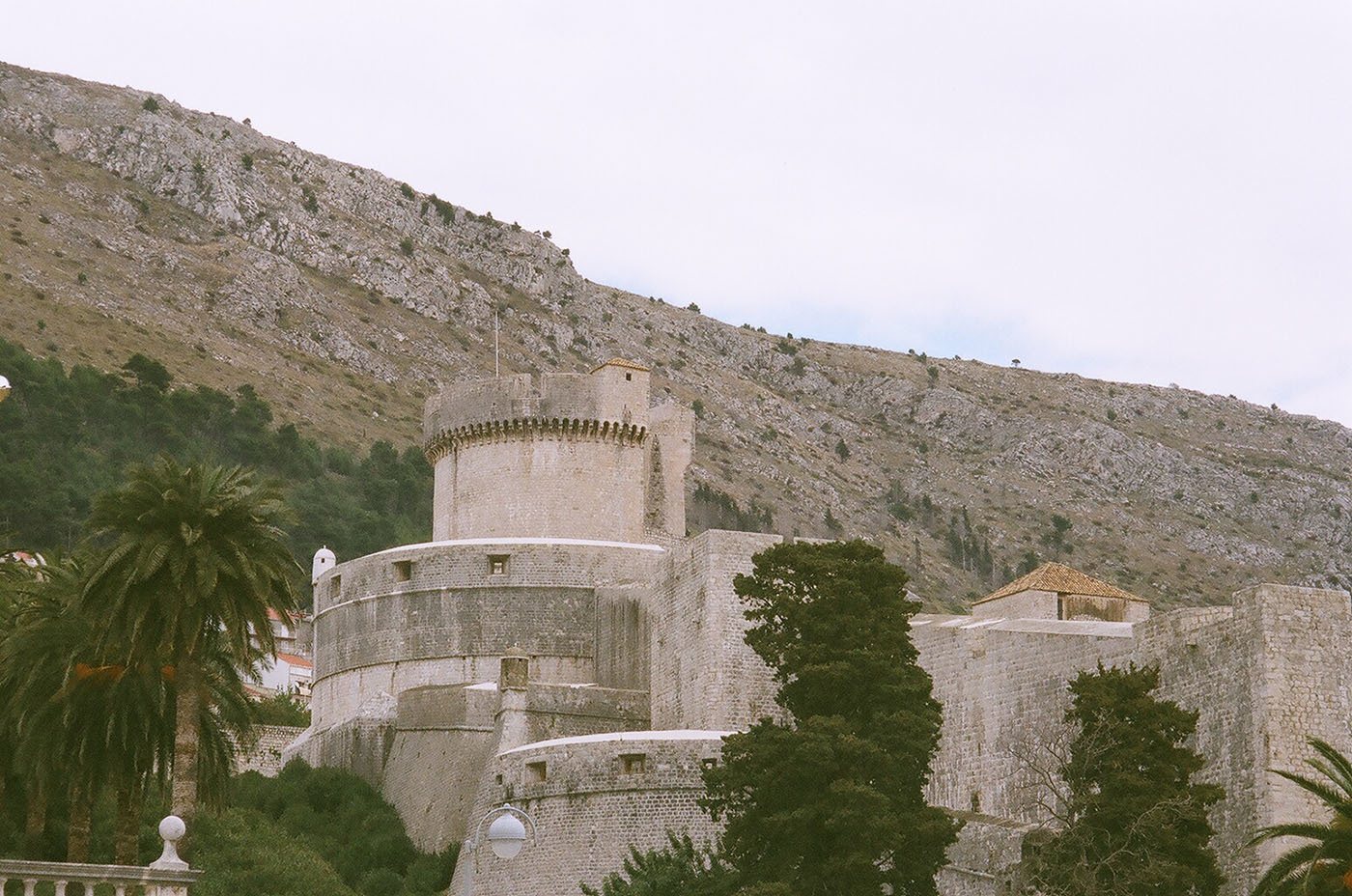
The walls stretch nearly 2km, encompassing Dubrovnik’s historic core and dotted with towers, forts, and viewpoints that make it easy to imagine the city’s fortified past.
Here’s a suggested route, based on my experience, along with tips to make the most of your walk.
Suggested Route and Highlights
Start your journey at Pile Gate, the main entrance to the Old Town. From here, the path takes you clockwise along the walls, leading to the Minceta Tower — the highest point of the fortifications and a prime spot for breathtaking, 360-degree views of the city below.
Continue along to Fort Bokar, where you’ll have stunning views of the sea on one side and the terracotta roofs of the Old Town on the other.
The route then leads to the St. John Fortress, positioned above the harbour, and finally to the Fort Revelin, where the walls open up to the city’s eastern gate and provide a perfect vantage point over the marina.
Tips for Exploring Dubrovnik's City Walls
- Timing is Key: The walls can get crowded, so consider starting early in the morning or later in the afternoon for a more peaceful experience, especially during peak tourist season.
- Stay Hydrated: Bring water with you — especially in warmer months, as the path along the walls offers little shade.
- Wear Comfortable Shoes: The stone walkways are uneven in places, and a good pair of shoes will make the walk more comfortable.
- Bring a Camera: There are photo-worthy spots around every corner, so you won’t want to miss capturing the city from these unique perspectives.
- Ticket Access: Entry to the city walls requires a ticket, which also grants access to the nearby Fort Lovrijenac, just outside the walls — a great addition to your walk if time allows.
Walking Dubrovnik’s walls is more than sightseeing; it’s a step back in time with every turn, connecting you to the city’s living history.
Meander through Dubrovnik's Old Town
Wandering through Dubrovnik’s Old Town feels like slipping into another world, where every corner reveals a piece of the city’s character. I started at the main street, Stradun, a gleaming limestone walkway polished smooth by centuries of footsteps. The morning light cast a glow over the stone buildings lining the street, a perfect mix of Gothic, Renaissance, and Baroque architecture that sets the stage for exploration.
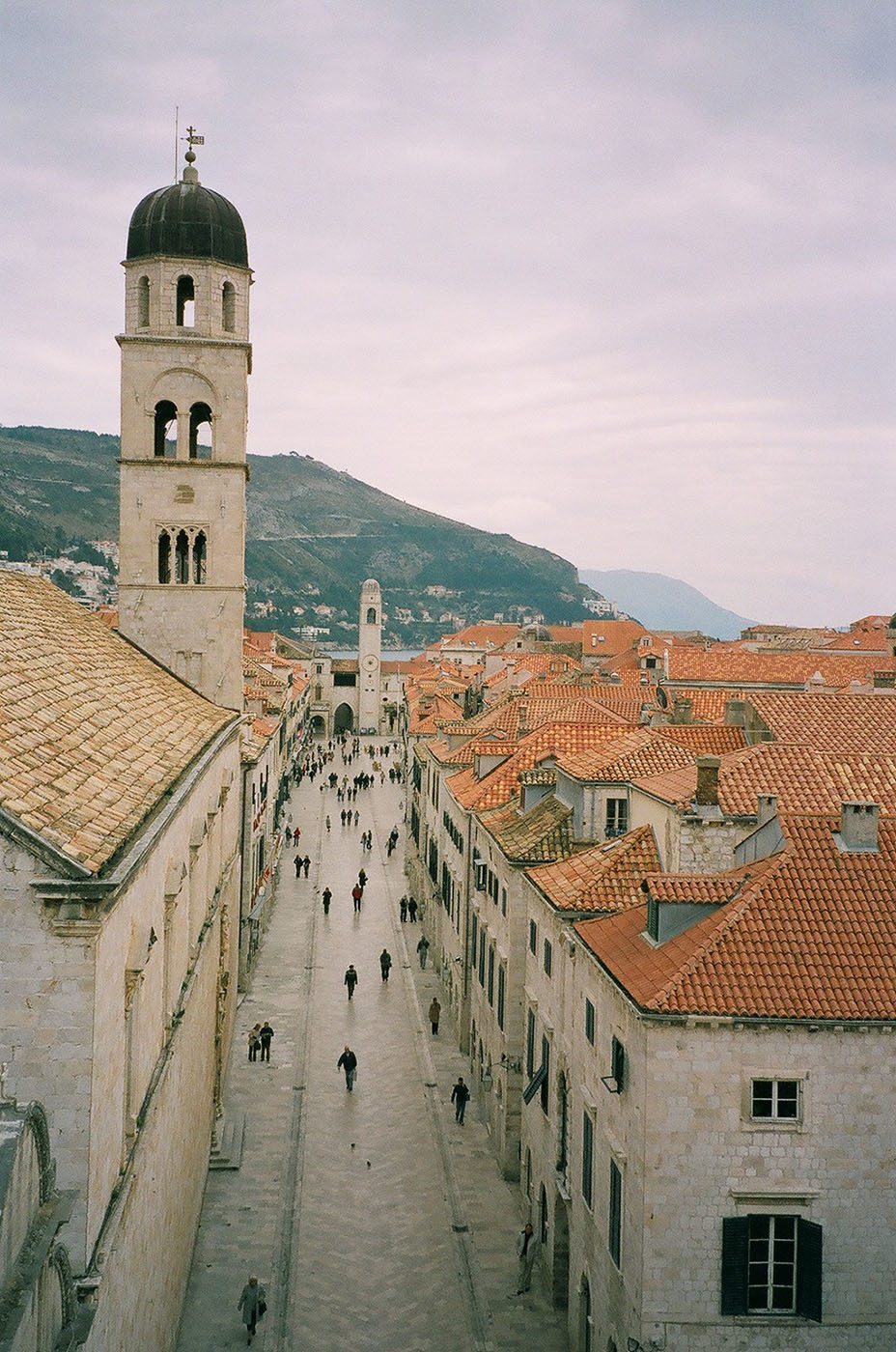
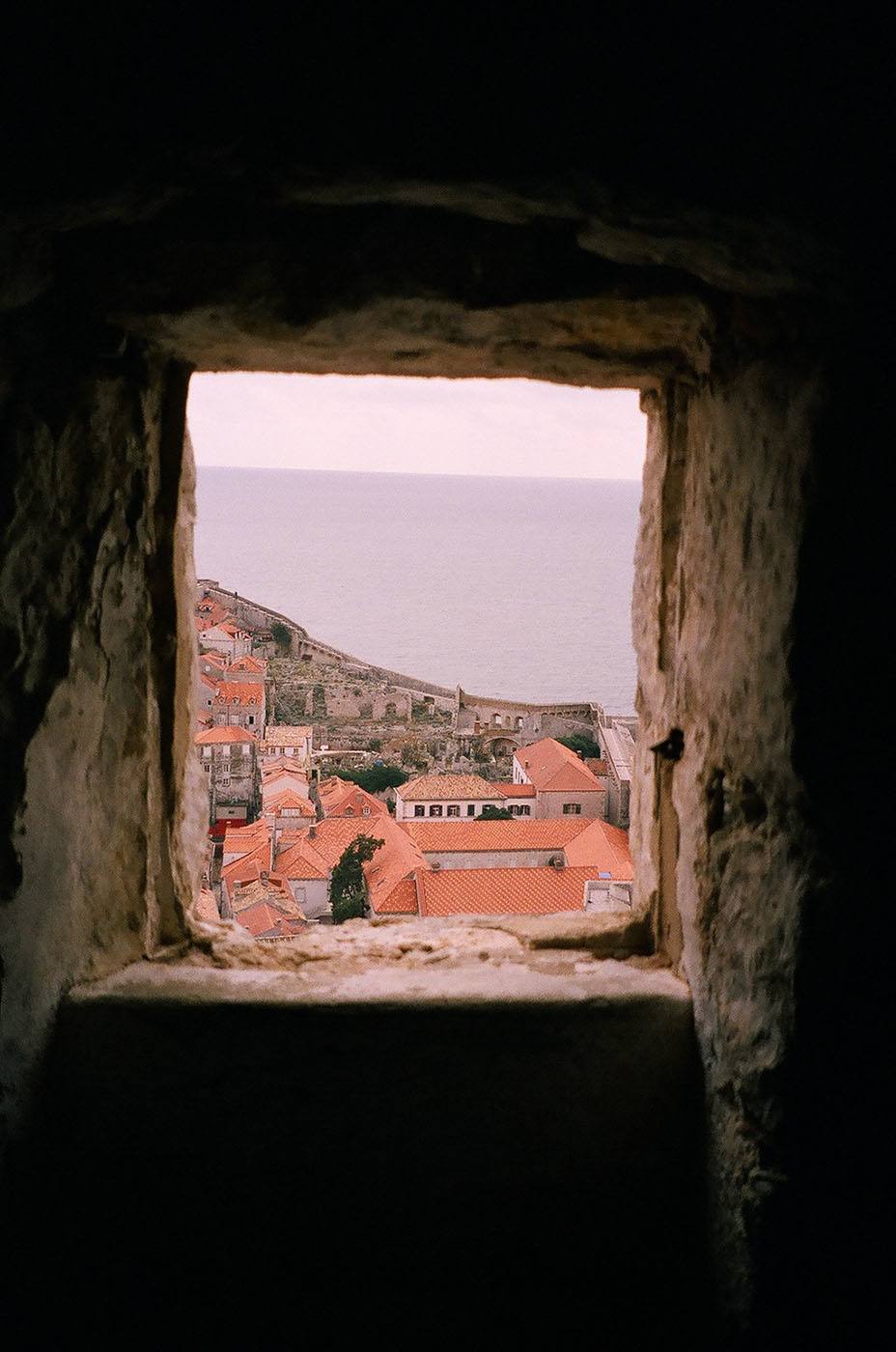
If you’re interested in uncovering the deeper history behind these streets, consider joining the Dubrovnik Discovery Old Town Walking Tour, which dives into the stories and landmarks that make this area so special.
➡ Click here to book your tour
As Steve, Tina and I moved away from the main thoroughfare, the atmosphere changed — narrow lanes beckoned, lined with quaint shops, cafes, and tucked-away courtyards. It’s easy to get lost here, but that’s part of the charm.
Around one corner, we stumbled upon the Onofrio Fountain, a massive stone fountain that’s been here since the 15th century, still bubbling with cool, fresh water. A few steps further led me to the Franciscan Monastery, where a quiet cloister and an ancient pharmacy (one of the oldest in Europe) offered a glimpse into the past.
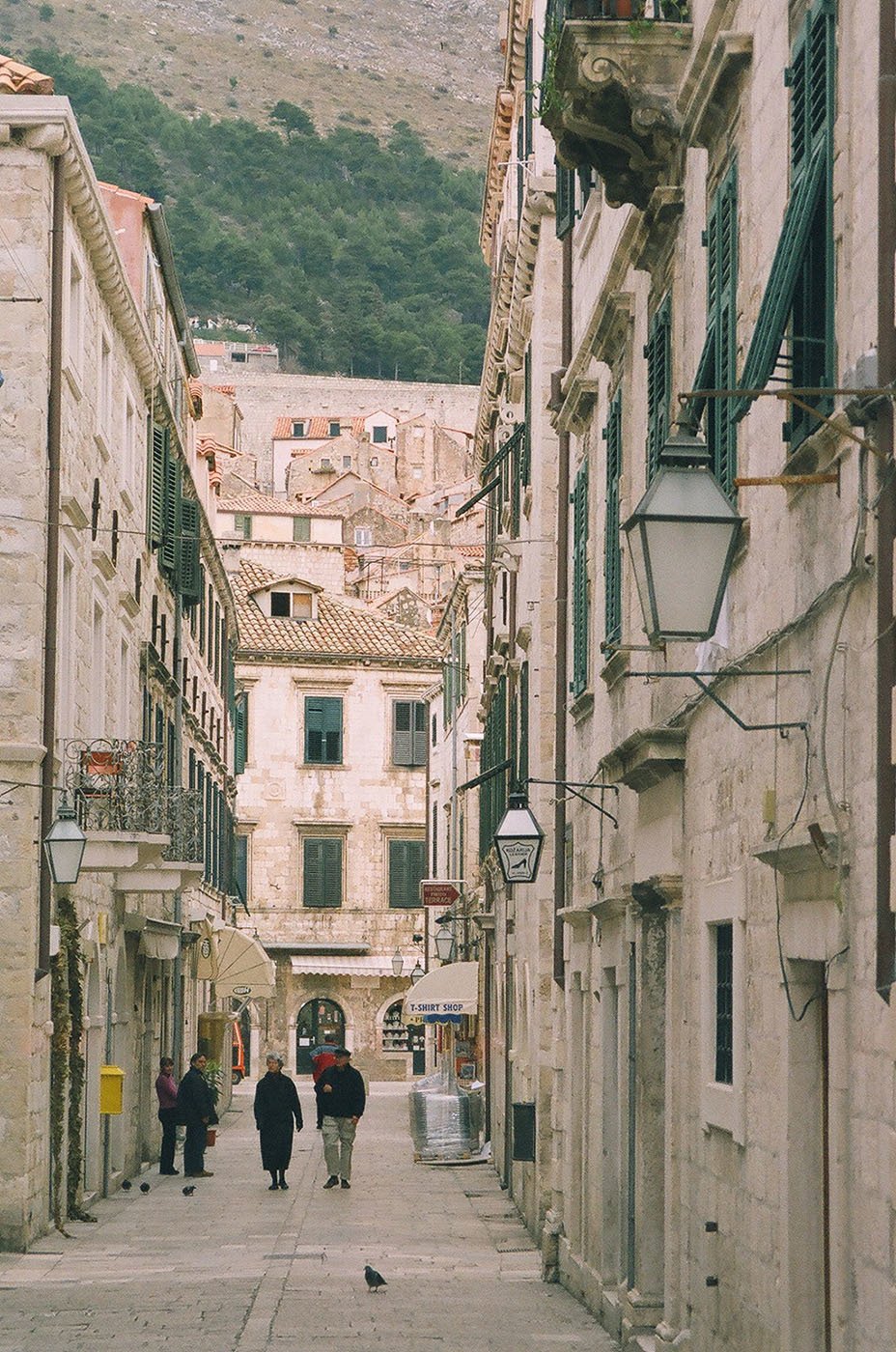
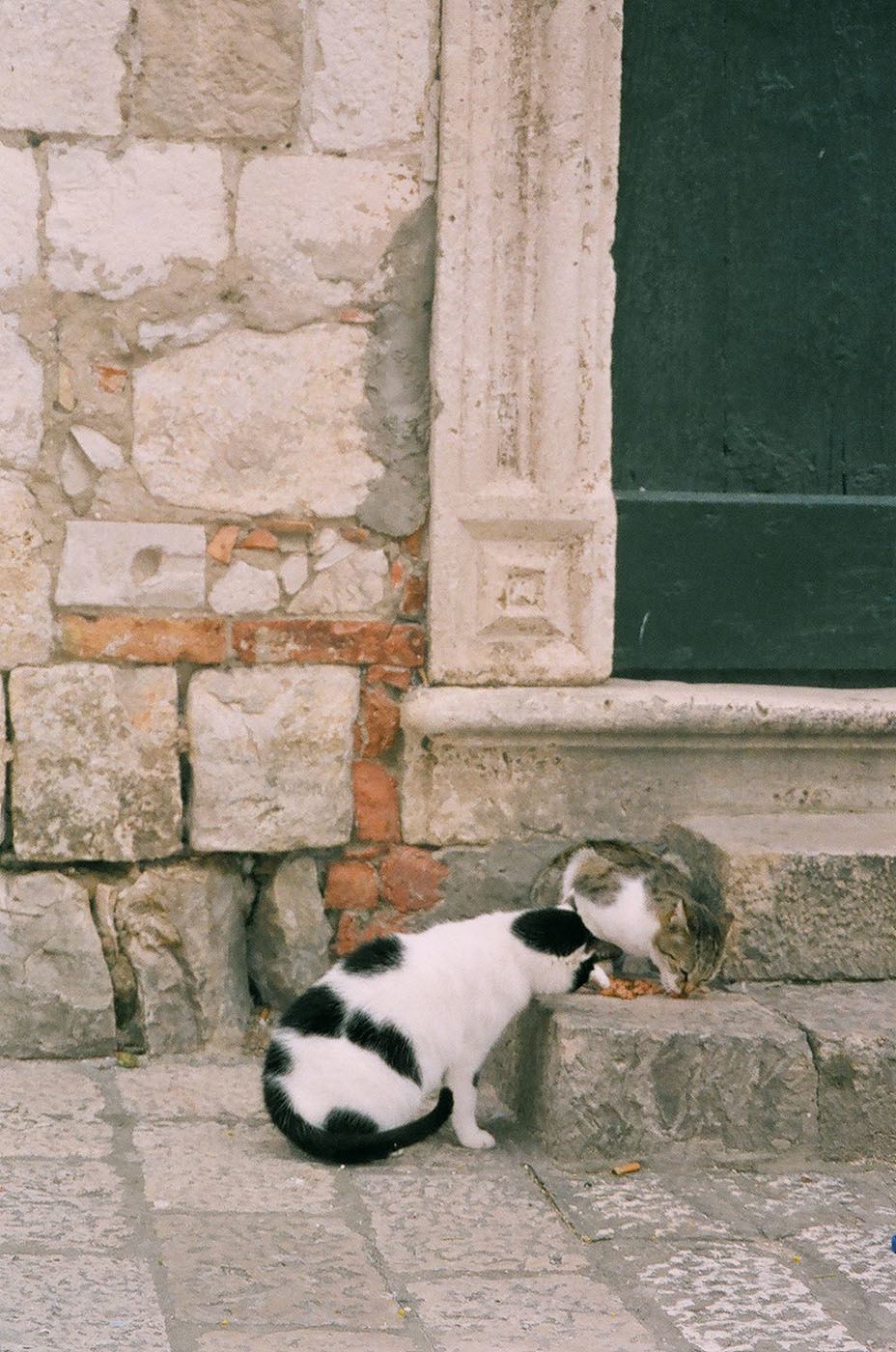
In the Old Town, history blends seamlessly with daily life. Locals chat by their doorways, and the scent of fresh pastries wafts from bakeries that have been here for generations.
I made a stop at Gundulić Square, a small but lively market filled with stalls of fresh produce, spices, and souvenirs — a great spot to pick up a taste of local life. Just beyond the square, the Dubrovnik Cathedral rose with its stunning Baroque design, a stark contrast to the medieval streets around it.
Every so often, we'd pause for a hot chocolate or a slice of homemade cake at a sidewalk cafe. The Old Town isn’t just a place to see but a place to experience slowly, letting each discovery unfold naturally. It’s a journey that pulls you into Dubrovnik’s rhythm, a chance to step into history while feeling very much a part of the city today.
Climb Dubrovnik’s Steep Stairs
Exploring Dubrovnik means embracing its staircases, which twist and turn up the hillsides, offering unique perspectives over the city and coast.
Starting near the Old Town, I ventured up the steep, narrow stairways that snake between historic buildings. Each climb felt like a mini-adventure — along the way, I discovered hidden alleyways, tiny cafes, and lookout spots where you can catch your breath while taking in the sweeping views over the Adriatic and red-tiled rooftops.

It’s a workout, but every step is worth it for those postcard-perfect vistas.
Dip into Dubrovnik's Adriatic Waters
Even in winter, Dubrovnik’s coastline is hard to resist.
My friends and I found ourselves at the water’s edge, rolling up our jeans and wading in up to our knees, despite our winter jackets. The cool Adriatic water felt refreshing and bracing — a reminder of the sea’s pull, even in the chillier months.
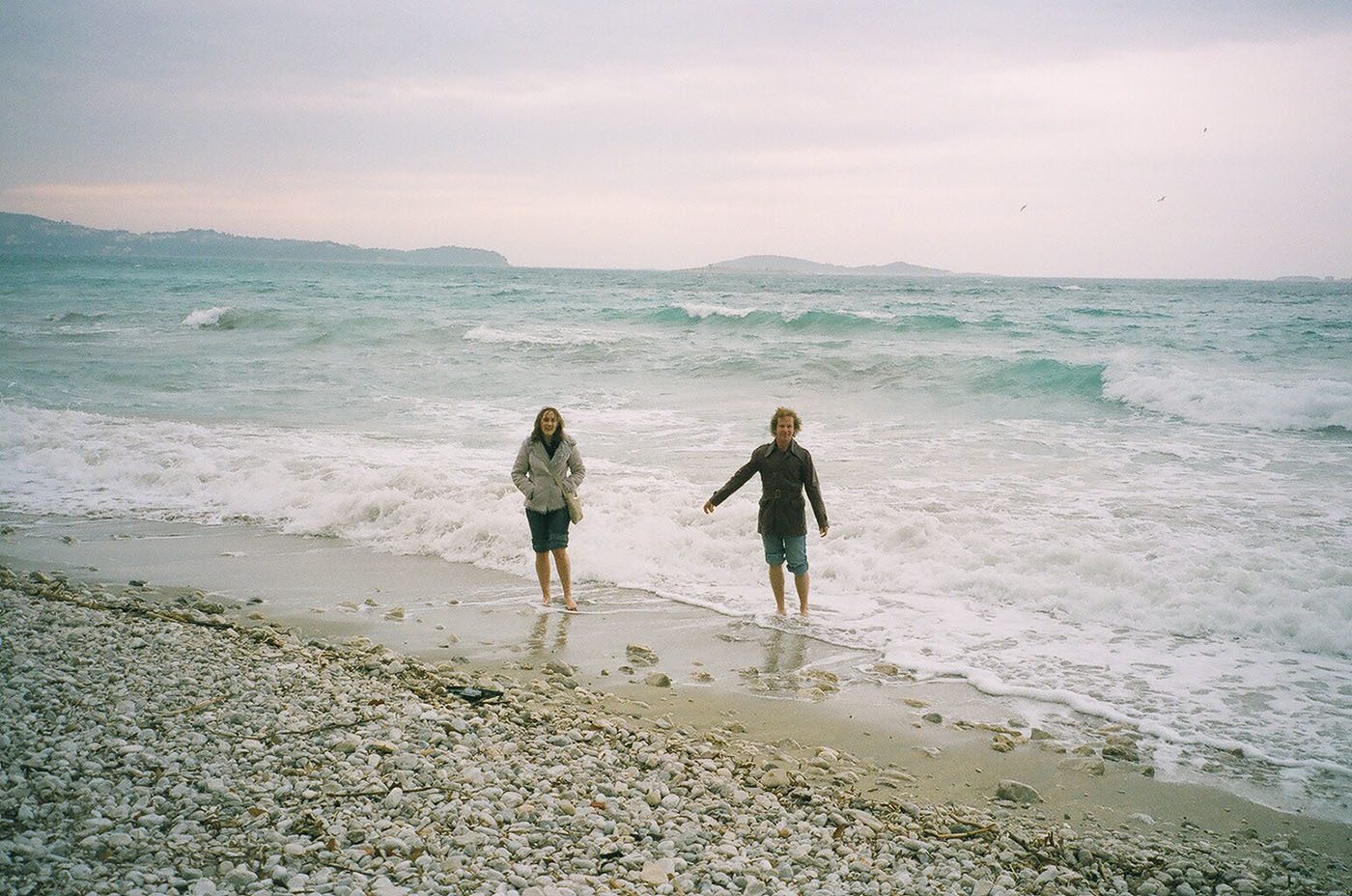
In warmer months, the experience is entirely different. Locals and visitors alike flock to the small beaches around Dubrovnik, diving into the Adriatic’s clear, turquoise waters.
For a unique perspective, the Dubrovnik: Sea Kayaking & Snorkeling Tour is a great way to explore hidden caves and snorkel in crystal-clear spots along the coast.
➡ Click here to book your tour
Popular spots like Banje Beach offer incredible views of the Old Town while you swim, and if you’re after a bit more adventure, cliffside spots like Buža Bar let you jump straight into the sea from rocky ledges.
Swimming in summer here is a celebration — a way to soak in Dubrovnik’s beauty from the water and feel fully immersed in the coastal spirit of the city.
Ride the Dubrovnik Cable Car
For one of the best views of Dubrovnik, the cable car ride to Mount Srđ is hard to beat. Starting just outside the Old Town, the cable car whisks you up the mountainside, offering sweeping views over the terracotta rooftops to the Adriatic’s endless blue. The ride takes only a few minutes, but the panorama at the top is something to savour, especially at sunset when the city below glows in the evening light.
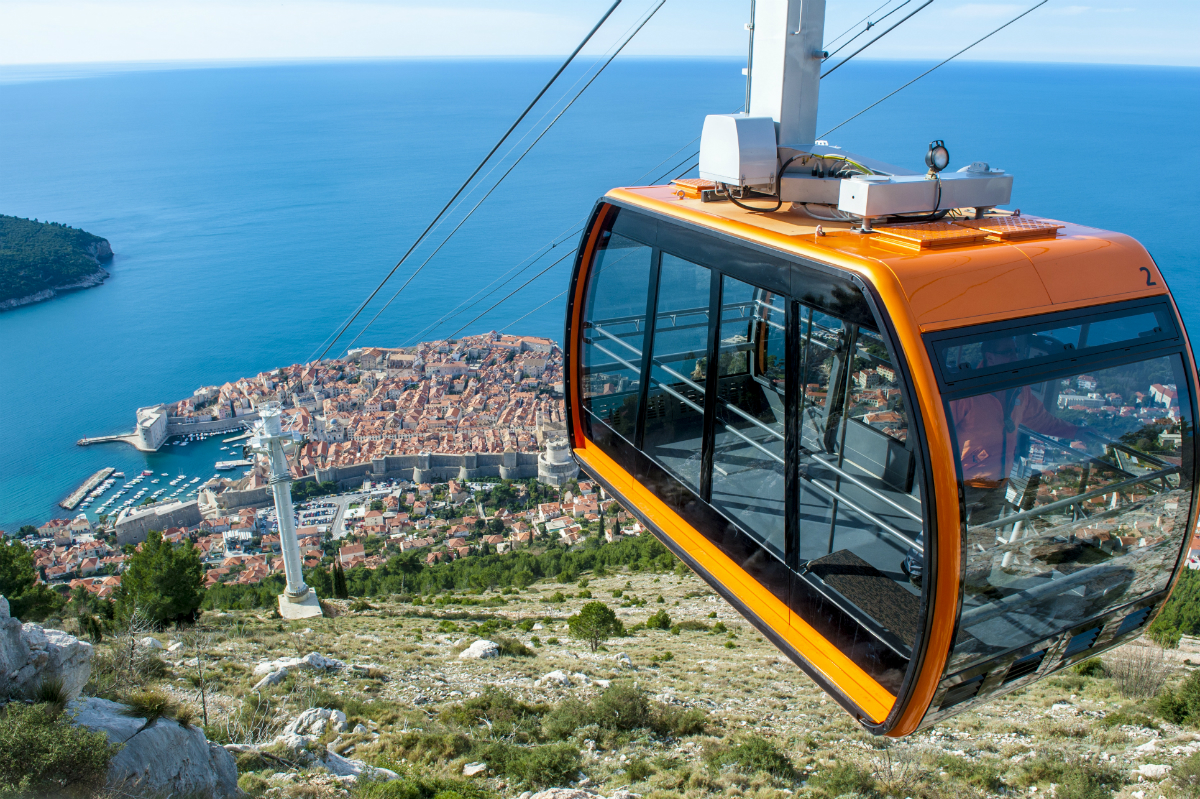
At the summit, there’s more to explore than just the view. You’ll find a small café where you can enjoy a drink while taking in the landscape, as well as a museum within Fort Imperial that tells the story of Dubrovnik’s recent history.
Whether you’re a photography enthusiast or just want a quiet moment with a spectacular view, the cable car ride is a memorable way to see Dubrovnik from above.
Feast on Local Dalmatian Fare
After a day exploring Dubrovnik’s winding streets, there’s no better way to recharge than with some hrvatska kuhinja — traditional Croatian cuisine. Dubrovnik’s menus showcase fresh seafood, Mediterranean vegetables, and hearty dishes that reflect Croatia’s coastal lifestyle.
For a true taste of the city, consider joining the Dubrovnik Old Town Food Tour, a small-group experience that takes you through local favourites and hidden gems, sampling authentic Croatian dishes along the way.
➡ Click here to book your tour
My friends and I settled into a cosy seaside spot in the Old Town, where I savoured a plate of black risotto (crni rižot), made from fresh Adriatic cuttlefish and coloured with squid ink for a deep, briny flavour - accompanied by a shot of grappa for good measure.

If you’re looking to try more local specialties, order a plate of pašticada, a slow-cooked beef dish with a rich, tangy sauce, typically served with homemade gnocchi. Or, go for a classic peka, where meat or octopus is cooked under a bell-shaped lid with potatoes, olive oil, and herbs — a true Dalmatian delight. To finish the meal, the locals recommend a shot of rakija, a strong fruit brandy, or a slice of rožata, a custard dessert similar to flan.
Dubrovnik’s culinary scene is simple but full of character, blending fresh ingredients with recipes that have been passed down through generations.
Where To Stay in Dubrovnik
Dubrovnik offers a range of accommodation to suit most styles, from boutique hotels within the old city walls to quiet seaside retreats along the coast. Wherever you choose, staying here means easy access to both the city's historic charm and its stunning Adriatic views.
Here are a few worth considering.
Budget: Dubrovnik Hostel
Dubrovnik Hostel is all about the location — set near the city walls, it’s just a short stroll to the heart of the Old Town and Dubrovnik’s iconic sights. While it may not have the most glowing reviews and offers a no-frills experience, it’s a reasonable option for budget travellers who prioritise location over luxury.
Expect the basics, and you’ll be well-positioned to explore the city on foot.
Mid-Range: Cozy Rooms At Old City Gate
Cozy Rooms At Old City Gate is a solid midrange pick right by Dubrovnik’s iconic Old City Gate, making it ideal for quick access to the sights. While it’s on the pricier end of the midrange spectrum, it offers basics like air conditioning, WiFi, and even a terrace with city views. Just keep in mind the reviews are mixed, so it may be best suited for those prioritising location over luxury.
High-End #1 (outside Old Town): Hotel Dubrovnik Palace
For a top-notch stay in Dubrovnik, Hotel Dubrovnik Palace offers luxury right on the water, with views to match. It’s about 4km from the Old Town, so it’s a quieter escape from the city’s bustle. Perfect for unwinding after a day of exploring, with easy access to the coastline and the kind of service you’d expect from a 5-star hotel.
High-End #2 (inside Old Town): Stayeva 11
Stayeva 11 is a fantastic high-end choice for those wanting to stay within the heart of Dubrovnik's Old Town. Nestled just steps from the Stradun Promenade and Dubrovnik Cathedral, this spot is perfect for immersing yourself in the city’s UNESCO-protected charm. With cosy touches like a kitchenette and a seating area, plus family-friendly amenities and stellar views of the city, it’s a great option for travellers looking to combine comfort with unbeatable location.
Things to Know While Planning Your Trip to Dubrovnik
Dubrovnik isn’t just a city; it’s a step into history framed by the turquoise glow of the Adriatic. From navigating the ancient walls to handling local currency, here are some things you need to know to make the most of your visit.
How to Get to Dubrovnik
By Air
The closest airport, Dubrovnik Airport, is located 20km from the city centre. It sees flights arriving from over the continent and some from further afield. Airlines which service Dubrovnik Airport include:
- Aer Lingus
- British Airways
- Easyjet
- German Wings
- Iberia
- Lufthansa
- Norwegian Air
- Turkish Airlines
- American Airlines
I found Dubrovnik Airport to be well-connected, with direct flights from many major cities in Europe. From there, you can hop on a shuttle bus to the city centre — just be prepared for a bit of a walk if your accommodation is deep within the Old Town.
By Bus
On my trip, I noticed that the bus station is about 2.5 kilometres from the Old Town, so a quick bus ride or a walk will get you into the heart of Dubrovnik. Buses from other cities, like Zagreb or Split, are reliable, but keep in mind travel times can be quite long.
Services that arrive in Dubrovnik originate in the following cities:
- Zagreb (11 hours)
- Korcula (3 hours)
- Mostar (3 hours)
- Sarajevo (5 hours)
- Split (4.5 hours)
- Zadar (8 hours)
There are additional services between various Montenegrin and Bosnian cities and Dubrovnik during summer months only.
For information about fares, visit the Libertas Dubrovnik website.
By Cruise Ship
There are various cruise companies that dock at the Port of Dubrovnik to give passengers a chance to visit the Old Town. For information about the port and access to the city, visit the Dubrovnik Port Authority website.
By Ferry
There are ferries which run along the coast (and back) and between Bari and Dubrovnik. Visit the Jadrolinija website for details.
How to Get Around Dubrovnik
On Foot
Steve, Tina and I got around the city completely on foot (except for the bus journey that transported us to our accommodation outside of city limits).
I loved the sense of discovery that came with each narrow lane and staircase. Even when we got a bit lost, we eventually found our way to either the city walls or the mountain backdrop, so you’re never truly lost here. If the incline is too great then you know you're heading in the wrong direction.
The entire Old City is pedestrianised and wandering the warren of narrow lanes is akin to taking a journey through time. There are signs at the entrances to many of the streets but some are misleading or inaccurate.
By Bus
I found the local buses easy to use, especially with tickets bought at a kiosk (a bit cheaper than buying on the bus). If you plan to use the buses often, getting a day pass is handy — especially if you’re staying a bit farther from the Old Town.
Most buses lead to the Old Town. For information about specific routes and fares, visit the Libertas Dubrovnik website.
Here are a few tips regarding buses in Dubrovnik:
- Tickets are cheaper when bought at a kiosk (1.50 Euro) compared to 2 Euro on the bus
- Tickets are valid for 1 hour
- If you plan on using the bus a lot, purchase a day pass (4 Euro) at a select kiosk (one being the International Bus Station)
- Bus 1, 1A and 1B are key links between the Old Town and the Main Bus Station
Is A Visa Needed for Visiting Dubrovnik, Croatia?
Since Croatia joined the Schengen Area in 2023, visitors from other Schengen countries can travel to Dubrovnik without border checks. EU citizens can also enter freely with an ID, as Croatia is part of the EU.
For non-EU and non-Schengen visitors — like travellers from the US, Canada, and Australia — a visa isn’t usually required for short stays of up to 90 days within a 180-day period under Schengen rules.
Be sure to check the latest entry requirements as policies can vary depending on your nationality.
Currency in Dubrovnik: What You Need to Know
As of 2023, Croatia adopted the Euro (€) as its official currency, replacing the Kuna. This shift makes travel simpler for visitors from other eurozone countries, eliminating the need for currency exchange.
When I visited, I noticed that while card payments are most common, smaller cafes and markets appreciated cash. Bringing a mix of cash and card helped me navigate everything from small purchases at the market to meals at local spots.
Iconic Things to Do in Dubrovnik: Conclusion
Dubrovnik is more than just another historic city; it’s a place where history feels alive, woven into every stone and stairway. From the fortified walls that offer stunning views to the quiet lanes of the Old Town, each corner brings something new, unexpected, and inviting.
Exploring Dubrovnik gave me a sense of connection to the people, past and present, who have called this city home.
Whether you’re drawn here for the history, the scenery, or the food, Dubrovnik leaves a lasting impression that’s hard to put into words. It’s one of those rare places that lives up to its reputation and invites you to see a little more each time.
I left feeling fulfilled yet curious — already imagining what I might uncover on my next visit.
Ready to explore Dubrovnik? Bookmark this guide or share it with a friend to start planning your own journey to Croatia’s southern gem!
